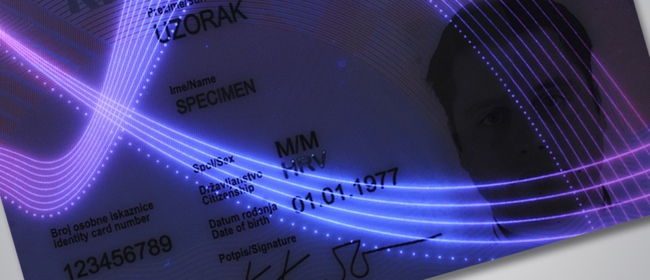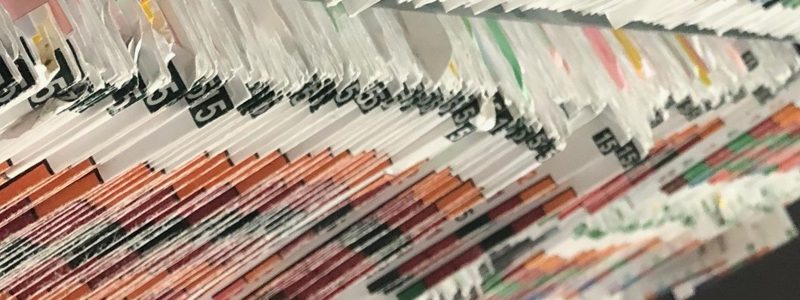Taking your medical device to market often involves a long approval process and there are a lot of medical device labeling requirements involved. The U.S. Food and Drug Administration, an organization commonly referred to simply as the FDA, has established a set of rules for you to go through. Labels are often relegated as an afterthought, but without them, your product is on the sideline.
If you need medical device labels, we can help. If that interests you, then contact us for a proposal. However, the purpose of this post is simply to provide you with the information you need on medical device labeling requirements.
What information must you include on the labels of medical devices? And just as crucially what materials and adhesives do you need to use, so that vital data stays on your product from the time of assembly through to its full lifespan at the point of use?
What Are the Medical Device Labeling Requirements for the United States?
The FDA has provided a baseline measurement of what information must be included on all your medical device labels. This set of criteria is mandatory to receive approval for the product to be sold in the United States.
The FDA requires the following information to be displayed on all your medical device labels:
Name and address of the manufacturer, packer, or distributor of the product
The address must include the business’ street address, city, state, and zip code. It’s important for you to remember that if the company listed on the label did not make the product, the label must state: “Manufactured by” or “Distributed for.”
Directions for correct use
All of your medical device labeling must include a description of how to safely use the product. Also, your labels need to clearly state on the product packaging and/or insert the device’s intended purpose. Any conditions under which the device may malfunction or become hazardous must also be listed. Other important things that you should find on the label include the following:
- Appropriate dosage amounts and associated ages
- How often to use the device/take the medication
- Recommended timing for use of the product
- Application of the product
- Outlined preparations to use the product
- Potential hazards
- Expiration date if applicable or life expectancy of the product
- Identifying serial number
Printed in English with two notable exceptions
The FDA requires all of your medical device labeling to be printed in English. However, there are two exceptions: Puerto Rico and any U.S. territory where English is not the primary language. In these cases, you can use the primary language of the area on the label.
Statements easy to find and read
All medical device labels must be placed on an area of the packaging that is easy for you to find. In addition to this, you must be able to read it without any difficulty. Any graphic design, font, or packaging that obscures your ability to read the statement violates the FDA’s terms.
If you have non-prescription medical devices, those are subject to several other regulations as well. These include:
Identification and description of use
You must display the name of the product on the front of the packaging. In addition to the device’s “common name,” you need to include text which describes its intended use. You’ll note that the description is kept quite short. More detailed information for proper usage will be found on the back or side of the packaging.
A list of the contents found in the package
One of the most helpful things you’ll find on a medical device label is a list of what you can find in the box. Among the items which you may discover on a product label include:
-
Count
Count can simply be the number of each part found in the package. However, for certain items whose appropriate use is related to size, you should also include measurements. Measurements are expressed using the Imperial system.
-
Measure
For items that involve liquids, you need to list all measurements in gallons and/or ounces.
-
Weight
Make sure all weights must be stated in pounds and ounces.
Medical Device Labeling Requirements Rules Regarding Symbols
If you’ve been shopping for a new medical device, you’ve likely come across a few labels that include symbols. The FDA permits the use of symbols without explanation, assuming that they are part of the commonly understood language of the United States. Additionally, the FDA requires the symbols used on medical device labels to be compatible with the same symbols employed in other countries. This allows for a uniform system and permits devices to be sold in countries other than the United States.
To ensure a full understanding of all symbols, your device must be accompanied by an insert that explains the meaning behind them.
What is the Medical Device Labeling Suggested Format and Content?
Where you place a label is as important as what is in the product itself. The FDA has very specific requirements that outline where medical device labels should be found on a product.
The regulations outlined by the FDA state that the following criteria must be adhered to:
Found on the display portion of the panel
The label should be easily identifiable on the front (if possible) of the packaging.
Cannot be located on two or more panels if room is allotted in one primary space
The FDA wants labels on any medical device to be easily visible when the product is on display on a shelf. You need to make sure it’s as readily available for you to see as the item’s price.
Package design cannot encompass space belonging to the required label
If enough room has been provided for labeling on the preferred part of the packaging, you should place it there. The package design should always be secondary to the placement of the medical device label.
Large enough type for easy reading
The font you use needs to be easy for you to read. To ensure this occurs, the type selected and the size of the font are very important.
No overcrowding of visuals on packaging
Packaging that has too much going on can be very difficult for you to read. Your packaging should be kept simple and be sure to avoid the overcrowding of images.
Contrast must exist between the packaging background and the label
To help the label to stand out, there should be a marked difference between the background and the required labeling.
To fully meet the FDA’s requirements, each medical device you inspect should contain the following items:
- Product label
- Instructions for use (paper insert)
- Instructions for the patient
- Additional information
Now that I have the Content, How Do I Translate that into a Physical Label?
Once you know what you have to print, now comes the challenge of translating that into a physical label that works for your device. The best way to start is by asking yourself questions in the following key areas:
Dimensions
What sized label are you looking for? Does it need to be exact, or are you able to work with the closest available? For example, some labels need to fit in a recessed area, while others may be constrained by ports or power suppliers. Understand the physical space and how much flexibility in terms of space is important.
Application surface
What surface is your label sticking to (i.e. powder-coated metal, HDPE plastics, bare aluminum, etc.)? Label adhesives are formulated for different surfaces. Once you understand what the label is sticking to, you can work with a specialist to get the correct formula.
Usage
Is your device indoor or outdoor? Do you have concerns about abrasion or chemicals, or are the labels relatively untouched? Basically, ask yourself what does a day in the life of your label look like. Some labels are wiped down multiple times a day. Others may be mostly untouched for long periods at a time. This will help inform the materials that are used and what protection layers—if any—are necessary.
Environmental Conditions
Are there any special requirements such as high heat tolerance or minimum application temperature? Are your labels going through a sterilization process? There are materials and adhesives designed to handle these special scenarios. If you map out any unique environmental conditions, you can design a label to meet these challenges as opposed to just hoping your label doesn’t fail.
Looking for more information on medical device labeling requirements to help with translating your content into a medical device label that you can trust? We can help! Contact our experts now at (800) 995-0483 or click here to request a proposal for your medical device label needs.



